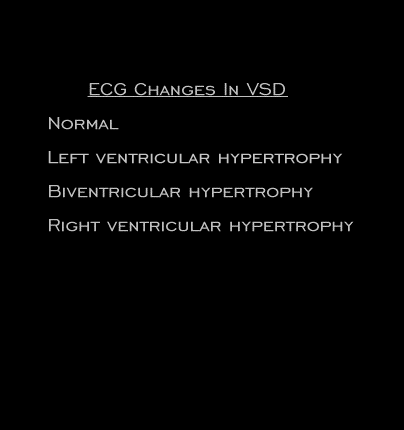
The electrocardiographic changes in patients with ventricular septal defects will depend on the magnitude of the shunt, and the presence (or absence), of pulmonary hypertension. For that reason, the electrocardiogram may be normal, or may indicate left venricular, right ventricular or biventricular hypertrophy.
